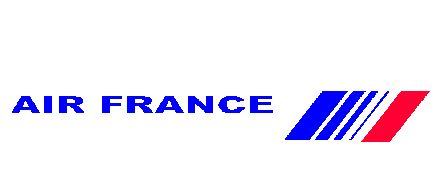 The Brazilian Air Force has found a debris field in the Atlantic that may be the remains of Air France flight 447, which disappeared late Sunday night en route from Rio de Janeiro to Paris.
The Brazilian Air Force has found a debris field in the Atlantic that may be the remains of Air France flight 447, which disappeared late Sunday night en route from Rio de Janeiro to Paris.
Officials say the wreckage was strewn over a large stretch of ocean about 400 miles northeast of Fernando de Noronha island, the place where the aircraft last made radio contact with air traffic controllers.
Among the items spotted were metallic objects, airplane seats, life jackets and an oil slick, but no signs of survivors.Considering the massive size of the missing A330 Airbus jet, the amount of material found was surprisingly small.
The Air Force made the discovery around 1 p.m. Tuesday morning (Brazilian time) after beginning a radar scan of hundreds of thousands of square miles of ocean.
Officials say the debris is likely the remains of the missing plane, as it was found not far from the flight path the aircraft would have followed on its journey to Paris.
 Bolstering this view is the eyewitness account of a flight crew of a Paris-bound Brazilian TAM Airlines jet, who spotted glowing objects on the ocean on Monday morning while flying over an area about 800 miles off the coast of Brazil.
Bolstering this view is the eyewitness account of a flight crew of a Paris-bound Brazilian TAM Airlines jet, who spotted glowing objects on the ocean on Monday morning while flying over an area about 800 miles off the coast of Brazil.
However, authorities are not at this point able to definitively confirm that the debris is from Flight 447 until they can retrieve some pieces and identify them.
The fact that the wreckage was located slightly west of where the last radio transmission was made may indicate that the pilot was trying to turn the plane around when it presumably went down.
Flight 447 took off from Rio de Janeiro airport at 7 p.m. Sunday evening and disappeared about four hours later, after emitting 10 automatic data signals indicating a loss of electrical power and cabin pressure.
Since the plane was out of range of Brazilian radar at that point, air traffic controllers tried to reach the crew by radio but met with no success.
Air France officials do not know exactly what may have caused the plane to go down, but they speculate that combination of factors relating to turbulence and bad weather could have played a part.
 At the time the jet disappeared, it was flying through the Intertropical Convergence Zone (ICZ), an equatorial area of violent and unpredictable thunderstorms.
At the time the jet disappeared, it was flying through the Intertropical Convergence Zone (ICZ), an equatorial area of violent and unpredictable thunderstorms.
Though modern planes are built to withstand extremes of weather and turbulence, a catastrophic electrical system or structural failure combined with a violent updraft or hailstorm could have incapacitated the crew and made them unable to navigate the rough conditions.
Aircraft normally try to avoid storms by going around them or above them, but much of the ICZ sits beyond the reach of ground-based radar, so pilots do not always know exactly what they are flying into. Satellite-based images can reveal areas of severe storms, but they are only available with a time delay.
Brazilian military ships are headed to the debris field area and are expected to arrive there Wednesday. Their crews will retrieve items from the water and submit them to French authorities for investigation.
They will also attempt to find the flight data and voice recorders, which presumably are at the bottom of the ocean. The ocean can reach depths of up to 23,000 feet in the area.
By Karen Elowitt for PeterGreenberg.com.
Related links: Wall Street Journal, New York Times, Associated Press
Related links on PeterGreenberg.com:
- Experts Discuss Theories on Crash of Air France Flight 447
- Air France Crash, Acapulco Shootout Top Travel News
- Found Debris NOT From Downed Jet; Air France Issues Warnings, Replaces Sensors
- Wreckage of Missing Air France Flight Identified; Cause Still Unclear
- Outlook Grim for Missing Air France Jet
- The Travel Detective on Airline Fees, GM Bankruptcy, and Airline Safety
- Greg Feith, Former NTSB Investigator, On the Buffalo Crash of Flight 3407
- The Crash of Flight 3407: Pilots Weigh In
- Buffalo Crash Probe Raises Training, Safety Questions About Regional Flights












